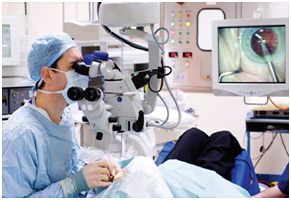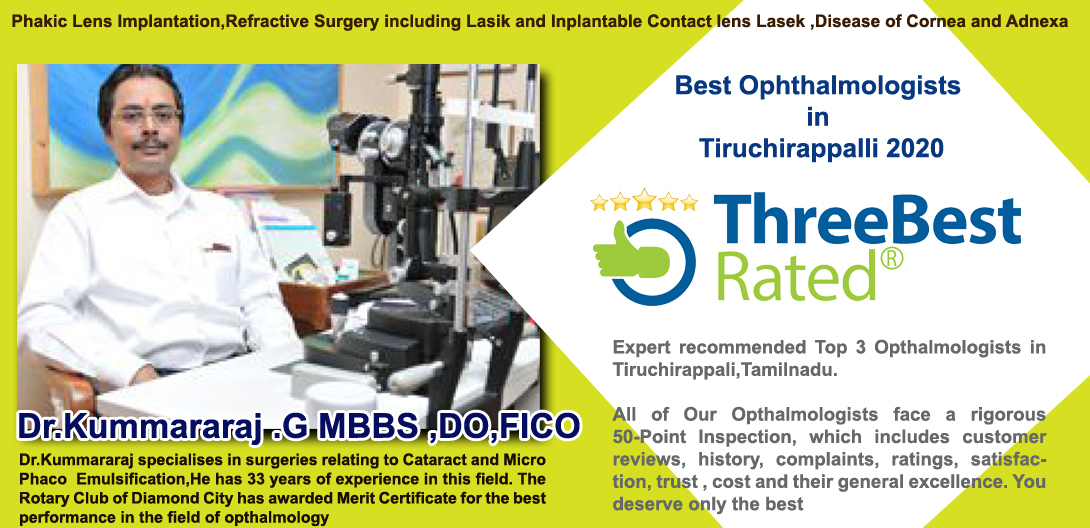Cataract Services
 Cataract is the clouding of the natural crystalline lens and typically occurs because of ageing, although other reasons may be prolonged use of steroids, exposure to ultra violet and associated health problems like diabetes and eye injuries.
Cataract is the clouding of the natural crystalline lens and typically occurs because of ageing, although other reasons may be prolonged use of steroids, exposure to ultra violet and associated health problems like diabetes and eye injuries.
Surgery is the only known effective treatment for cataract removal. All cataract surgeries are aimed at removal of the cloudy natural lens and replacing it with an Intra Ocular Lens(IOL). At A G Eye Care Hospitals Phaco Emulsification is performed (No stitch surgery) and a foldable IOL is inserted. There are multiple IOL choices available for the surgery which are explained below. These lenses can be inserted through a small 1.8 to 2.8 mm opening.
Lens :
Transparent, crystal clear lens located inside the normal eye that helps to focus light or an image, on the retina. In normal eye light passes through the lens to the retina.
Cataract
A Cataract is opaque (clouding) of the lens in the eye that affects vision.
- Cataract is very common in older people most cataracts are related to aging.
- Due to injury
- Prolonged in take oral or topical steroids.
- Chronic intra ocular infection.
Symptoms
- Blurred / cloudy vision
- Glare vision
- A hallow may appear around lights.
- Poor night vision
- Double or multiple images
- Frequent glass prescription changes
How to diagnosed cataract (Cataract is diagnosed through a complete eye examination)
- Vision acuity test
- Tonometry (measures the pressure inside the eye)
- Ducts – check for tear drainage of eye
- Dilated eye exam.
Treatment
Removing the clouded lens and implanting an artificial lens is the only treatment for cataract, which is a simple procedure.
Phaco emulsification is the most perfect operation for cataract advantages
- Small incision (2.8 mm)
- No suture
- No hospital stay.

Micro Incision Cataract surgery (MICS)
- Very small incision (1.8 mm)
- No suture
- Negligible astigmatism
- Early recovery
IOL (Intra Ocular Lens) Types
- Monofocal IOLs
(Silicone and Acrylic Material) - Multifocals (Corrected distance and near vision)
- Toric IOLs – monofocal and multifocal (if you have astigmatic power)
After surgery
- Mild irritation and watering are normal after cataract surgery may be sensitive to light after one or two days gradually decrease these
 discomfort.
discomfort. - For few days use eye drops to help healing and decrease the risk of infection.
- Avoid rubbing or pressing on your eye.
- Do not lift any heavy objects.








